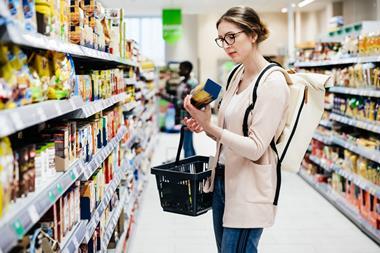Retailers have cast doubt on the value of the second phase of the Courtauld commitment, which came into effect this week.
The Wrap-backed Courtauld Commitment 2 (CC2) has set an industry target of reducing the carbon impact of food packaging by 10% by 2012, cutting household food waste 4% and reducing supply chain packaging waste 5%.
However retailers, who are all signatories, have warned the carbon impact of packaging is often "marginal" and claimed their own environmental schemes covered a wider range of factors.
Doubt has also been expressed about whether the 10% target is achievable, because most retailers have already exceeded the packaging reduction targets since the first agreement in 2005 and so a further 10% would be more difficult.
A Tesco spokeswoman said that while an industry-wide target was "a positive step", there were broader issues. "What we discovered with the carbon footprinting of our products is that packaging is often a marginal contributor compared with growing and transportation," she said.
Tesco last year announced it would become carbon-neutral by 2050, and was reducing the carbon impact of products throughout the supply chain by 30% by 2020.
Julian Walker-Palin, head of sustainability at Asda, said the first stage of Courtauld, which focused on reducing the weight of packaging, had "helped the industry work together" but was a simplistic way of reducing environmental impact.
"Lightweighting is one-dimensional," he said. adding that CC2 was a blunt instrument. "You can't look at carbon in isolation there are other factors such as water but we need to move down the carbon path first."
Asda had reduced the weight of its own-label packaging by 27% since 2006, which meant the 10% target would be difficult, Walker-Palin said.
A Sainsbury's source was dismissive: "There's no harm in signing up but it is not going to drive anything we do internally. We are doing these things anyway."
The Wrap-backed Courtauld Commitment 2 (CC2) has set an industry target of reducing the carbon impact of food packaging by 10% by 2012, cutting household food waste 4% and reducing supply chain packaging waste 5%.
However retailers, who are all signatories, have warned the carbon impact of packaging is often "marginal" and claimed their own environmental schemes covered a wider range of factors.
Doubt has also been expressed about whether the 10% target is achievable, because most retailers have already exceeded the packaging reduction targets since the first agreement in 2005 and so a further 10% would be more difficult.
A Tesco spokeswoman said that while an industry-wide target was "a positive step", there were broader issues. "What we discovered with the carbon footprinting of our products is that packaging is often a marginal contributor compared with growing and transportation," she said.
Tesco last year announced it would become carbon-neutral by 2050, and was reducing the carbon impact of products throughout the supply chain by 30% by 2020.
Julian Walker-Palin, head of sustainability at Asda, said the first stage of Courtauld, which focused on reducing the weight of packaging, had "helped the industry work together" but was a simplistic way of reducing environmental impact.
"Lightweighting is one-dimensional," he said. adding that CC2 was a blunt instrument. "You can't look at carbon in isolation there are other factors such as water but we need to move down the carbon path first."
Asda had reduced the weight of its own-label packaging by 27% since 2006, which meant the 10% target would be difficult, Walker-Palin said.
A Sainsbury's source was dismissive: "There's no harm in signing up but it is not going to drive anything we do internally. We are doing these things anyway."



















No comments yet